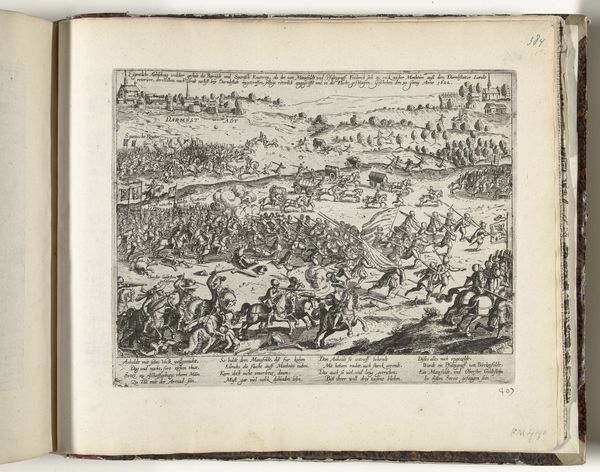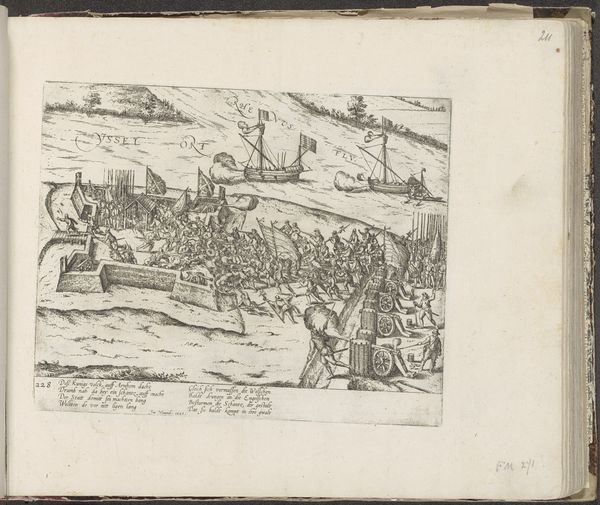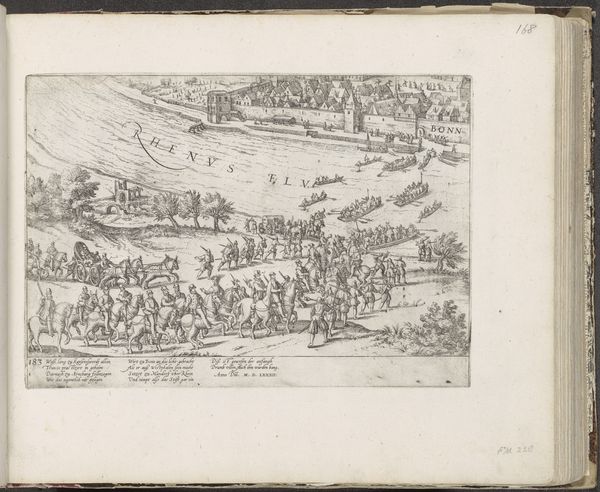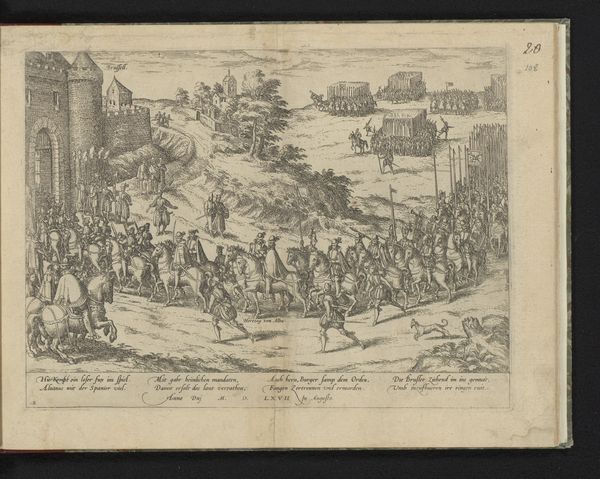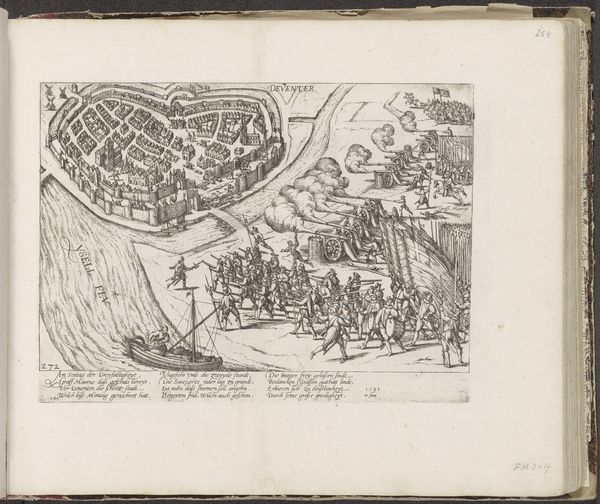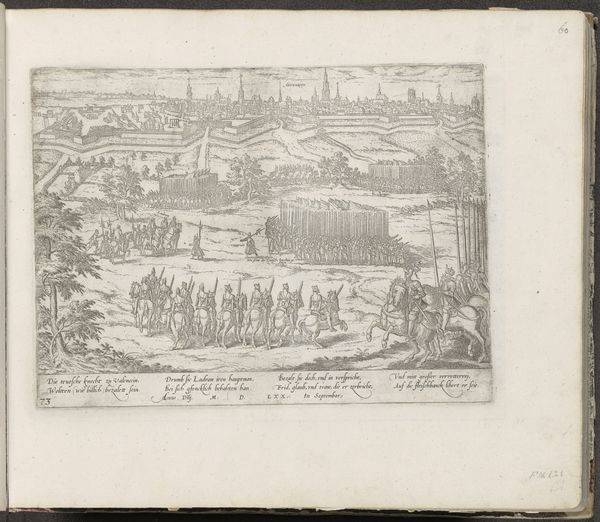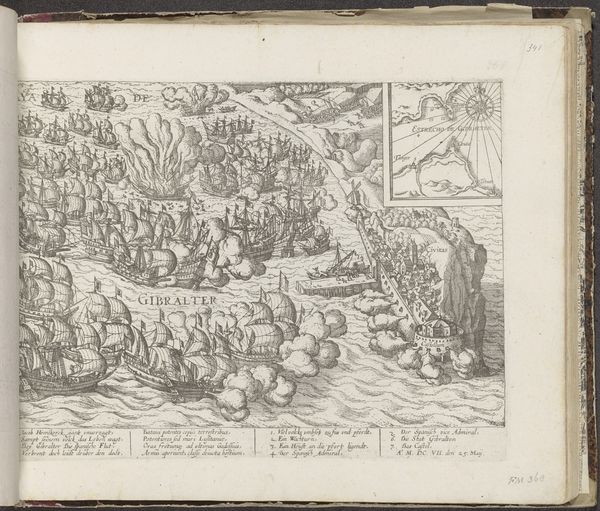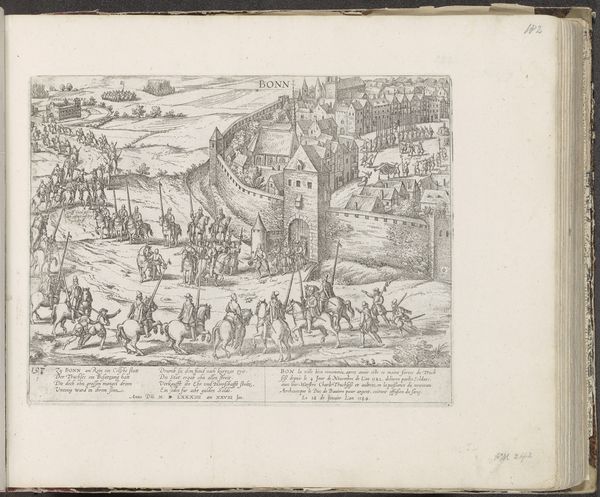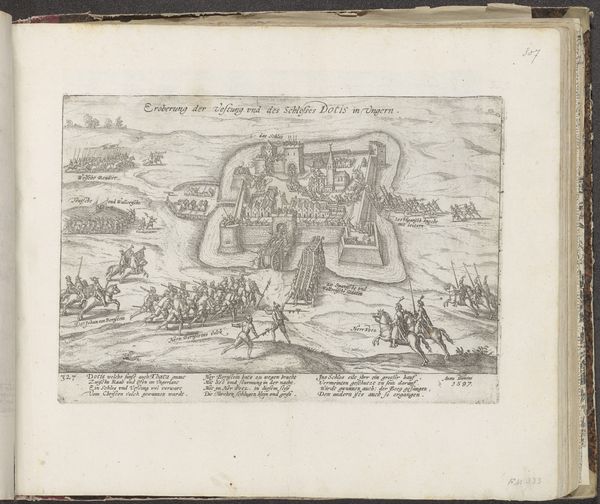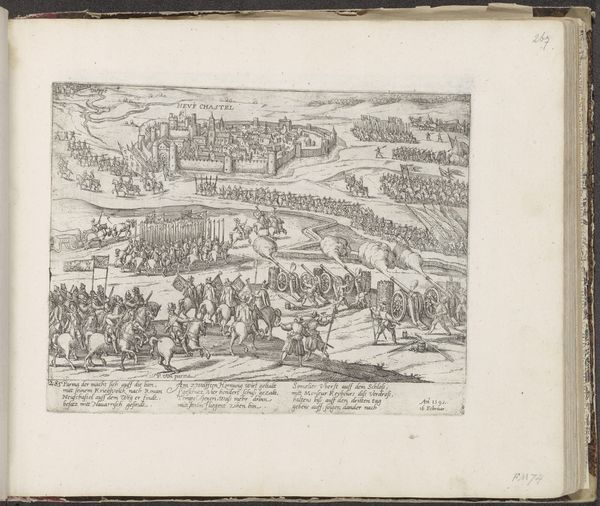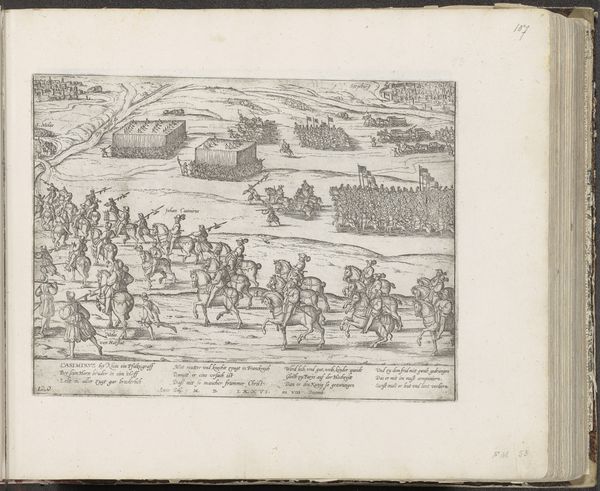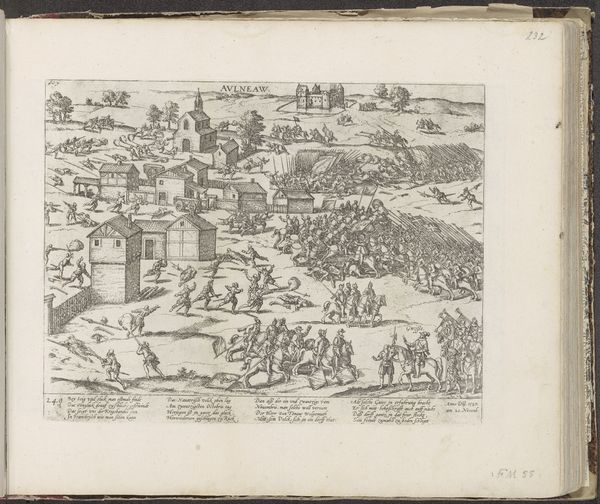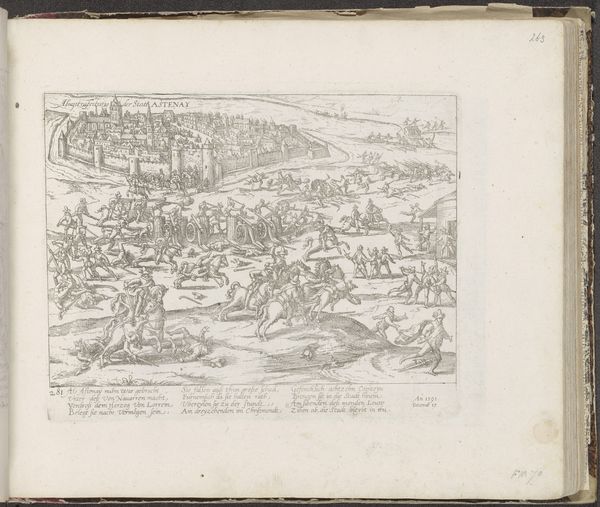
print, engraving
#
medieval
#
dutch-golden-age
# print
#
landscape
#
geometric
#
cityscape
#
history-painting
#
engraving
Dimensions: height 207 mm, width 299 mm
Copyright: Rijks Museum: Open Domain
Curator: This print, entitled "Inname van de schans bij Zutphen, 1591," or "The Capture of the Sconce at Zutphen, 1591," was created by Frans Hogenberg. It's an engraving, likely made sometime between 1591 and 1593, and depicts a historical event during the Eighty Years' War. Editor: My first thought is one of organized chaos. Look at the lines of soldiers converging upon the sconce, contrasted by what appears to be townspeople scattered around its base. There’s a strange tension between geometrical order and individual struggle. Curator: Exactly. Hogenberg's prints were often created for news publications. Consider the geometric representation of the fortress. It signifies the power structures of the time and echoes the renaissance interest in rationalizing space. What strikes you about its symbolism here? Editor: It's fascinating how this idealized shape contrasts so sharply with the organic, messy reality of war. You see the stark class divisions; observe those seemingly ordinary folks rushing to assist the military operation; one is even burdened with goods atop his shoulders. One wonders, how did race and gender function here? Curator: Undoubtedly. Those ordinary people carry a great deal of meaning, they serve as living witnesses, each carrying out a symbolic role in the taking of Zutphen. Think of them as embodiments of shared trauma. What do you make of their clothes? Are they an indicator of rank, an act of patriotism, a performative display? Editor: Probably all those things and more. Clothing always operates on many levels. This act represents, among other things, an encroachment on personal freedom. As we contemplate this clash, we must reflect on how historical biases and prejudices may skew our perception. Curator: I see the point you’re raising. This piece allows us to view a specific event through a wider perspective. The clothing adds a level of complexity, echoing tradition, religion, region, and potentially challenging or supporting political expectations. Editor: Exactly! The artist masterfully uses these common and geometric shapes to present war's contradictions; the individual freedoms set aside, and the collective hopes placed in a new political horizon. Curator: It offers a compelling insight into the narratives we construct around power, conflict, and ultimately, survival. Editor: Agreed. Let us think about what gets lost and also found in such historical renderings.
Comments
No comments
Be the first to comment and join the conversation on the ultimate creative platform.
